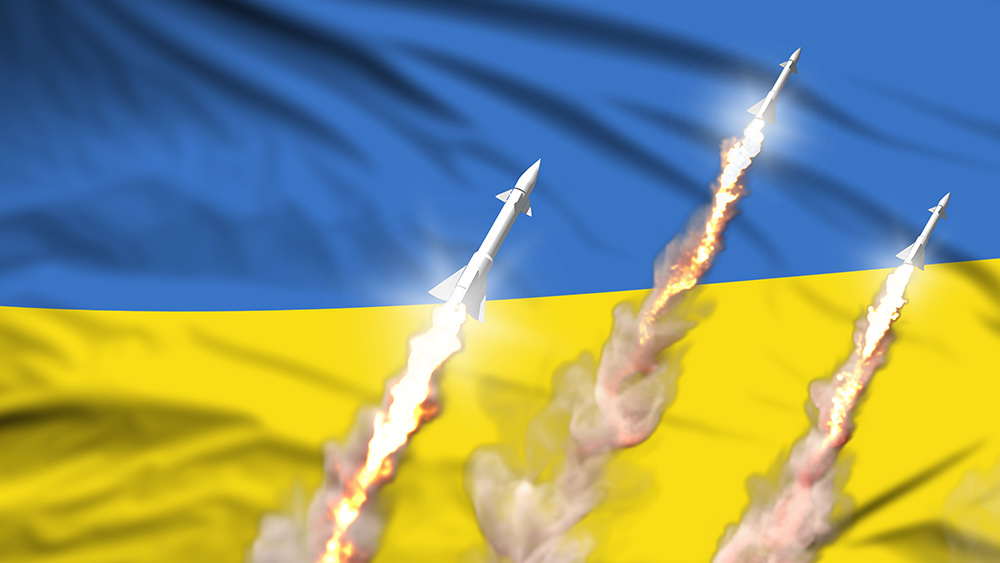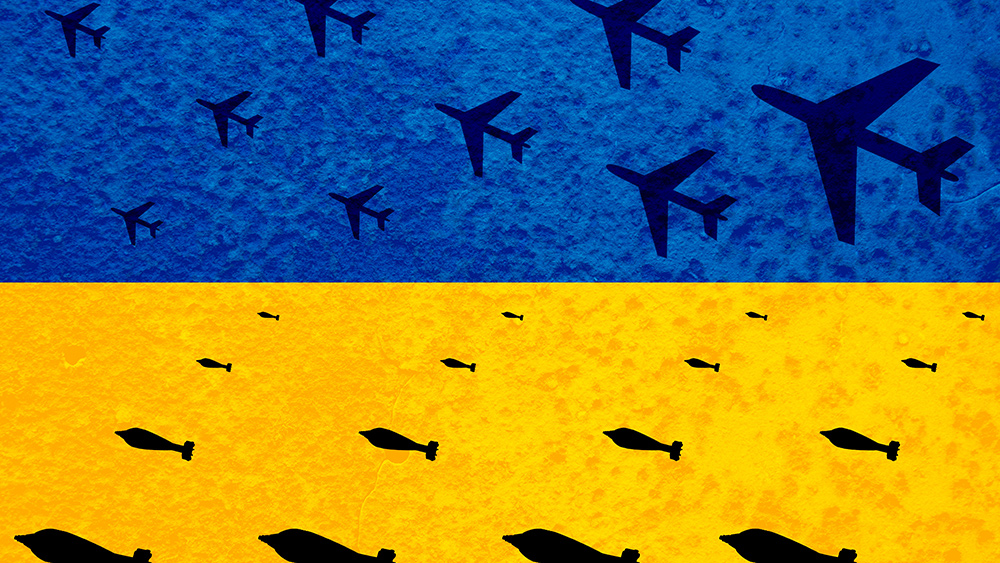Israeli strike on Syria kills 25, hits military research center
09/12/2024 / By Richard Brown

Israeli jets have launched a major strike on targets in Syria, killing at least 25 people, according to an opposition war monitor.
The strike, described as one of the most intense in recent years, primarily targeted a military research center in Masyaf linked to Syria’s chemical and ballistic missile programs.
Explosions were also reported in Damascus, Homs and Tartus. Syrian state media reported 16 deaths and 40 injuries. (Related: Israel attacks Iranian embassy in Syria to provoke Iran, rope U.S. into WWIII.)
The attack on Sunday night, Sept. 8, hit sites associated with pro-Iranian militias and the “scientific research facility” near Hama, reportedly managed by Iran’s Revolutionary Guards.
This facility had been among those the International Atomic Energy Agency sought access to after the 2007 destruction of Syria’s suspected al-Kibar nuclear reactor.
The Syrian foreign ministry condemned the strikes as blatant aggression, but the Israeli military has not commented. Israel has frequently targeted Syrian and Iranian-backed positions, but rarely discussed such operations.
The U.K.-based Syrian Observatory for Human Rights called the attack one of the most severe Israeli strikes in years, involving 14 missiles. Among the dead were five civilians, four soldiers and 13 individuals working with pro-Iran groups. The strikes reportedly destroyed buildings and military centers in Masyaf and targeted sites related to weapons development.
Iranian experts involved in developing precision missiles and drones were reportedly among the casualties.
A Syrian military source confirmed the strikes, stating that air defenses intercepted some missiles. Syrian state media reported two fires caused by the strikes, which firefighters are working to extinguish. Iran’s foreign ministry condemned the attack, labeling it a criminal act.
Masyaf was also targeted by Israel in 2017 over allegations it stored missiles and chemical munitions.
Iran’s evolving strategy
Since its first intervention in support of the Assad regime during the Syrian Civil War, Iran has entrenched itself deeply, bolstering pro-regime forces and actively working against the Syrian opposition.
Beyond its visible military presence, Tehran has made significant inroads into the social and political spheres, exploiting sectarian divisions and drawing numerous militias under its influence. This multifaceted approach underscores Iran’s role as a dominant power in Syria.
Iran’s primary objective is maintaining the strategic corridor linking Iraq, Syria and Lebanon, often referred to as the Tehran-Baghdad-Damascus-Beirut route.
This land corridor is crucial for transporting weapons and equipment to allies such as Hezbollah in Lebanon and militias in Iraq. Iran’s control over Syria hinges significantly on its support for Iraq-based militias. These groups are integral to the region’s alliances and dynamics.
According to a November 2019 study titled “Iranian Infiltration Networks in the Middle East,” Iran spends about $16 billion annually supporting its militias across Syria, Iraq and Yemen, with an additional $700 million for Hezbollah in Lebanon.
Iran’s strategy of backing proxy groups is consistent across the “Shia Crescent,” though Tehran has recently adopted new tactics that could further extend its influence.
Since the Gaza conflict began, Iran and its proxies – part of the so-called “axis of resistance” – have faced criticism for their lackluster support for Hamas.
To counter this perception, Iran has intensified efforts to secure its supply lines through Syria and Iraq, aiming to bolster Hezbollah’s arsenal. Field reports indicate a significant increase in weapon shipments from Iraq to Syria, particularly west of the Euphrates.
This uptick reflects the limited effectiveness of Israeli and U.S. strikes against Iranian targets and the weakening of Syrian Democratic Forces (SDF) control.
Recently, Iran-backed militias have empowered local factions to challenge SDF authority, complicating U.S. interests and potentially opening a new corridor for pro-Iran militias.
Iranian militias in Syria, numbering around 100,000 according to Iranian Revolutionary Guard Corps (IRGC) commander Hussein Salami, include groups like the Fatemiyoun Brigade (Afghans), Zainabiyoun Brigade (Pakistanis) and Saada Brigade (Yemenis).
The latest stories about the escalating situation in the Middle East can be found at WWIII.news.
Watch this video from “Southfront Press” discussing Israel’s escalation of the conflict with its new air strikes against Syria.
This video is from the channel The Prisoner on Brighteon.com.
More related stories:
China urges Israel to stop bombing Syria to avoid escalation of conflict in Gaza.
Sources include:
Submit a correction >>
Tagged Under:
Benjamin Netanyahu, big government, chaos, conflict, Damascus, evil, Hezbollah, Holy War, IDF, insanity, Iran, Israel, Israeli Defense Forces, Lebanon, military tech, national security, Syria, terrorism, Twisted, unhinged, violence, weapons technology, World War III
This article may contain statements that reflect the opinion of the author
RECENT NEWS & ARTICLES
COPYRIGHT © 2017 WEAPONSTECHNOLOGY.NEWS
















